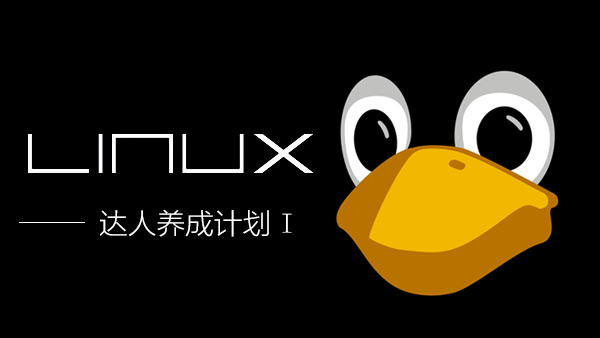Linux系统启动时使用initramfs (initram file system), initramfs可以在启动早期提供一个用户态环境借助它可以完成一些内核在启动阶段不易完成的工作。当然initramfs是可选的Linux中的内核编译选项默认开启initrd。在下面的示例情况中你可能要考虑用initramfs。
加载模块比如第三方driver
定制化启动过程 (比如打印welcome message等)
制作一个非常小的rescue shell
任何kernel不能做的但在用户态可以做的 (比如执行某些命令)
一个initramfs至少要包含一个文件文件名为/init。内核将这个文件执行起来的进程作为main init进程(pid 1)。当内核挂载initramfs后文件系统的根分区还没有被mount, 这意味着你不能访问文件系统中的任何文件。如果你需要一个shell必须把shell打包到initramfs中如果你需要一个简单的工具比如ls, 你也必须把它和它依赖的库或者模块打包到initramfs中。总之initramfas是一个完全独立运行的体系。
另外initramfs打包的时候要求打包成压缩的cpio档案。cpio档案可以嵌入到内核image中也可以作为一个独立的文件在启动的过程中被GRUB load。
Linux的initramrd img
在/boot目录下的initrd.img-xxx (Ubuntu)或者initramfs-xxx.img (CentOS) 文件即为Linux用的initramfs文件。我们可以将其解压出来看看其目录结构如下
# ls -l /boot/total 67408-rw-r--r-- 1 root root 1240067 Jul 13 2016 abi-4.4.0-31-generic-rw-r--r-- 1 root root 1247269 Aug 15 2017 abi-4.4.0-93-generic-rw-r--r-- 1 root root 189566 Jul 13 2016 config-4.4.0-31-generic-rw-r--r-- 1 root root 190364 Aug 15 2017 config-4.4.0-93-generic drwxr-xr-x 5 root root 4096 Jul 4 17:23 grub-rw-r--r-- 1 root root 21977388 Aug 24 2017 initrd.img-4.4.0-31-generic-rw-r--r-- 1 root root 22440248 Aug 24 2017 initrd.img-4.4.0-93-generic-rw------- 1 root root 3879360 Jul 13 2016 System.map-4.4.0-31-generic-rw------- 1 root root 3899015 Aug 15 2017 System.map-4.4.0-93-generic-rw------- 1 root root 6937248 Jul 13 2016 vmlinuz-4.4.0-31-generic-rw------- 1 root root 7000752 Aug 15 2017 vmlinuz-4.4.0-93-generic # initrd的文件类型是gzip压缩文件 # file /boot/initrd.img-4.4.0-93-generic/boot/initrd.img-4.4.0-93-generic: gzip compressed data, from Unix, last modified: Thu Aug 24 20:51:59 2017 # cp /boot/initrd.img-4.4.0-93-generic . # 文件大小为22M # ls -lh initrd.img-4.4.0-93-generic-rw-r--r-- 1 root root 22M Jul 5 15:46 initrd.img-4.4.0-93-generic # 修改文件的后缀名否则gzip工具无法识别 # mv initrd.img-4.4.0-93-generic initrd.img-4.4.0-93-generic.gz # 用gzip解压缩 # gzip -d initrd.img-4.4.0-93-generic.gz # 解压后的大小为57M # ls -lh initrd.img-4.4.0-93-generic-rw-r--r-- 1 root root 57M Jul 5 15:46 initrd.img-4.4.0-93-generic # 解压后的文件类型为cpio档案 # file initrd.img-4.4.0-93-generic initrd.img-4.4.0-93-generic: ASCII cpio archive (SVR4 with no CRC) # 将文件从cpio档案中copy出来 # cpio -idmv < initrd.img-4.4.0-93-generic . lib64 lib64/ld-linux-x86-64.so.2... lib/systemd lib/systemd/systemd-udevd115997 blocks # 最终可以看到如下文件和目录结构就是initramrd的结构 # lsbin conf etc init initrd.img-4.4.0-93-generic lib lib64 run sbin scripts
可以看到initramfs和跟分区文件系统的雏形很像只是它的大小不大少了很多工具和库。有些内核模块就在其中比如/lib/modules/4.4.0-93-generic/kernel/。
qemu中启动"Hello World" initramfs
在前文“在qemu环境中用gdb调试Linux内核”中已经准备了一个Linux启动环境但是缺少initramfs。我们可以做一个最简单的Hello World initramfs来直观地理解initramfs。
Hello World的C程序如下与普通的Hello World相比加了一行while(1)。
#include <stdio.h>void main()
{
printf("Hello World\n");
fflush(stdout); /* 让程序打印完后继续维持在用户态 */
while(1);
}编译helloworld.c程序
# gcc -static -o helloworld -m32 helloworld.c
-static: On systems that support dynamic linking, this prevents linking with the shared libraries. //不让gcc动态链接shared libraries
-m32: Generate code for a 32-bit or 64-bit environment //在前文“在qemu环境中用gdb调试Linux内核”中Linux内核被编译成了32位架构所以这里在gcc的选项中也编译成32位可执行程序
在64位机器上编译成32位程序可能会报错如下
In file included from /usr/include/stdio.h:27:0,
from helloworld.c:2:
/usr/include/features.h:374:25: fatal error: sys/cdefs.h: No such file or directory
# include <sys/cdefs.h>
^
compilation terminated.
解决方案是安装libc6-dev-i386包。
# apt-get install libc6-dev-i386
打包initramfs文件
# echo helloworld | cpio -o --format=newc > hwinitramfs
在qemu中启动编译好的内核把hwinitramfs指定为initrd在-append参数中将init指定为helloworld。
# qemu -kernel linux-3.18.6/arch/x86/boot/bzImage -initrd hwinitramfs -append "console=ttyS0 rdinit=helloworld" -nographic
系统能成功启动到输出"Hello World"并且在用户态停住。结合前文“在qemu环境中用gdb调试Linux内核”可以看到qemu虚机中运行的Linux系统已经成功挂载了initramfs, 在console日志中也能看到“Unpacking initramfs...”。



 随时随地看视频
随时随地看视频



